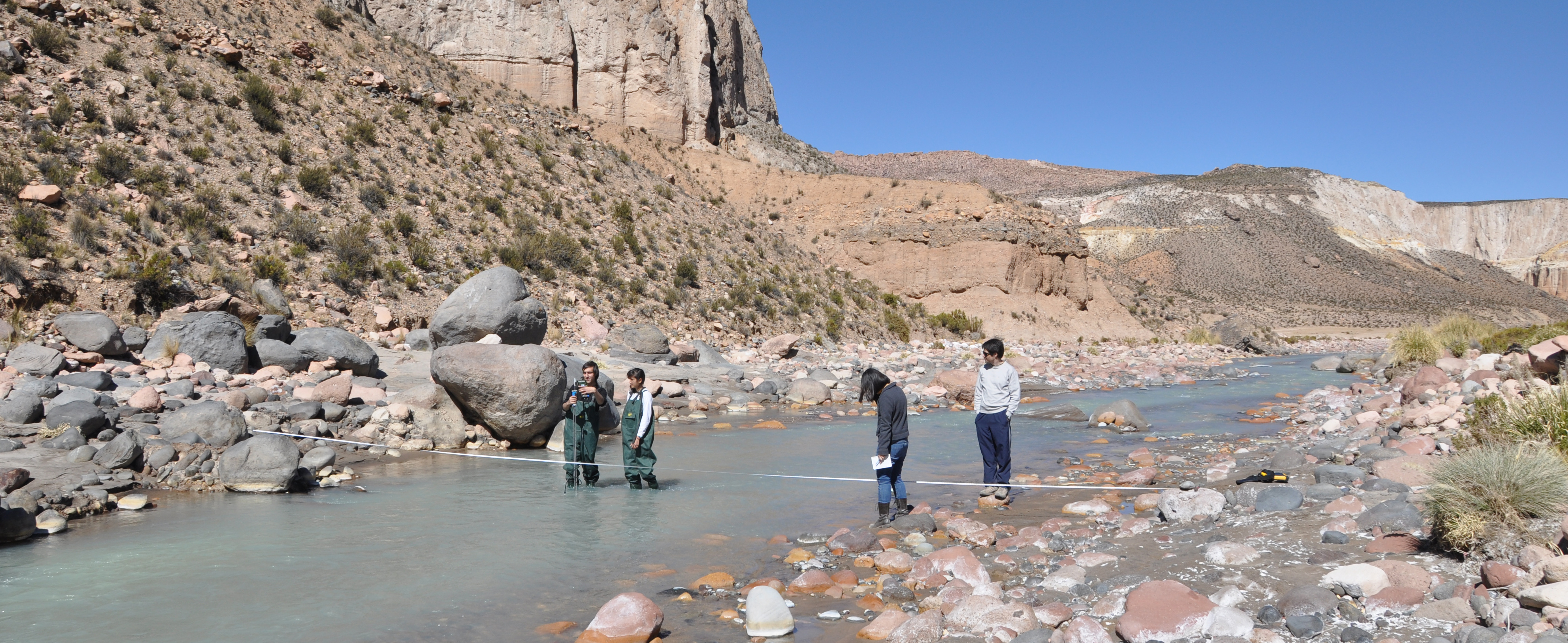Engineers for a Sustainable World Students Conduct Water Research in Chile

In the Atacama Desert of northern Chile – the driest place on earth – one of the main sources of fresh water for thousands of people is contaminated by boron and arsenic, leaving entire communities without access to clean drinking water.
Los Molinos is one of those communities. The village’s 140 inhabitants used to rely on the Lluta River, which rushes off the Andes and into the Pacific Ocean. The villagers currently depend on water trucked in twice a month by the government, but water safety is still a concern. Residents store their water for weeks in large, plastic barrels, drawing it out with pitchers and boiling it for cooking and drinking. While some periodically scrub the inside of the barrels with bleach, algae frequently grows in the murky water.
In July, two McCormick students – Brooke Jarrett, a first-year environmental engineering PhD candidate, and Kimberly Huynh, a sophomore environmental engineering undergraduate – visited Chile to learn more about the Lluta Valley’s water problems. Their long-term goal: to design and implement an affordable, low-maintenance device that will improve water quality for people in the region.
Jarrett and Huynh are participating in the Thirst Project, a program that since 2010 has brought together students from McCormick and the Pontific Catholic University of Chile to pursue clean water solutions and education for the people of the Lluta Valley. The Thirst Project is a segment of Engineers for a Sustainable World (ESW), a student group that works to promote sustainable living in developed and developing countries.
“Water is something that you could fix with a device,” Jarrett said. “But behavior around water is not something that just snaps into place. You definitely need something that is ongoing to inform, to educate, to learn more about how people live and then see what kind of intervention you can have.”
Over the course of 10 days in July, Jarrett and Huynh collected water samples from people’s homes and the river and met with professors at the Pontific Catholic University in Santiago, where experts are also strategizing about how to improve water conditions. The students also interviewed community members about their water usage, sanitation practices and the history of the Lluta River.
They also visited Chapisca, a poorer village of 95 people less than five kilometers away. Originally the students hoped to devise a plan that could benefit both villages, but determined that they were too far apart to build a canal to connect them.
Over the next several months, Jarrett and Huynh will work with other Thirst Project members to translate their interviews, test the water samples they brought home, and decide a course of action.
“Right now we’re coming to a decision on what exactly we want to do there, how many people we want to serve,” Huynh said. “Whether we want to work on a prototype that would help on a family level, a community level, or so on.”
Options include designing a small solar distillation unit for each family or a more elaborate community-sized filtration system, which would require more maintenance.
The students’ trip was funded by grants from the Alumnae of Northwestern University and the civil and environmental engineering department.
-- Sarah Ostman